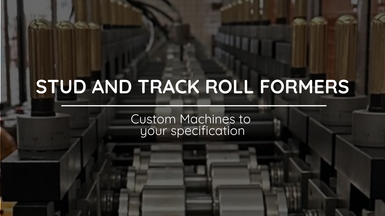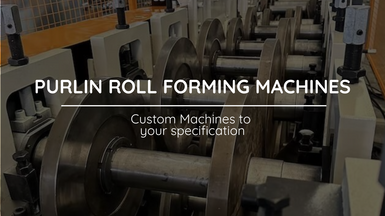
Roll Forming Equipment Setup Tips
Anyone working on the machine should familiarise themselves with the operating manual and the basic terminology
Posted on Tuesday, February 28, 2023
Proper setup of your roll-forming machine can ensure that your device continues to operate smoothly, that your products are uniform and of high quality, and can even extend the lifetime of the machine.
Anyone working on the machine should familiarise themselves with the operating manual and the basic terminology of the machine and process. This way, operators, maintenance technicians, and supervisors will all be able to communicate with one another with ease.
To begin it is essential to understand the tolerances of the machine accurately. In order to do so, the operator must run a test part to discover the result, tweak the line and run another test repeating again and again to get this right.
Roll forming machines - a basic setup procedure
Firstly clean the shades and alignment spacers.
Use the setup sheet to discover where the first pass is located and inset the tools i.e., a spacer, followed by a roll, followed by a spacer, and so on. It is important that the stamped ring faces the operator in charge of this task and that the numbers follow sequence.
The next task is to install the outboard stand onto the spindles and then tighten up the shaft locking nuts. It is vital to ensure the inner race doesn’t run against the outboard stand and that it is not loose. Lock down the outboard stand with clamps.
Measure the thickness of the material you intend to feed into the machine to know its precise thickness. Don’t just rely on the measurement on the label - every gauge can be a little thicker or thinner than stated, and accuracy is essential. Preset the roll tooling gap by using a feeler gauge on the inboard and outboard sides of the tool. You can then adjust the vertical distance between the upper and lower shafts. Measure the gap before setting the material in the rolls; this is crucial as the material must be able to pass through the gap for the machine to operate correctly.
Once the material is in the roll pass, the rolls can be reset as required.
Troubleshooting
Consult the setup sheet if you encounter any problems. However, there are also some other basic troubleshooting procedures to be aware of, such as maintaining the roll stand adjustment screws, which may need to be cleared of debris and changed to ensure the vertical centers are correct.
If a part produced by your machine does not match the expected specifications, the problem must be identified and isolated. Checking the accuracy of the roll-former alignment using a straight edge can help you see if something isn’t properly lined up. You can also check the strip at each pass - if a flange is out of alignment after emerging from the pass, you’ll know where the problem lies. Ensure you have the correct gap width and that the tooling connects to the material properly.
The product shape can change if your machine isn’t lined up correctly. Excessive wear on the rolls can indicate that the tools aren’t lining up, which suggests an alignment issue. Check for loose shafts first, but if you cannot see a problem, correct machine face alignment by grinding the spacer or shimming the bearing sets in the gearbox.
By following the above setup and troubleshooting tips, you can help ensure that your roll former remains in good working condition and produces uniform products to your exact specifications.
If you are looking for a high-quality roll forming machine, talk to the team at Roll Forming LLC today - we can help you find the right roll former for your business and are on hand to help with the machine set up too.
Roll Forming Machines LLC's New Factory
Posted on Sunday, March 23, 2025
We have relocated factories, which will be available for tours very soon.

Uncoiler, Decoiler and Coil Car Roll Forming Machine Accesories from Roll Forming Machines LLC
Posted on Sunday, November 24, 2024
Contact us today with your specifications for a custom Uncoiler, Decoiler or Coil Car at [email protected] or call us at (+1) (407) 859 1119

Stud and Track Roll Forming Machines from Roll Forming Machines LLC
Posted on Saturday, November 23, 2024
Contact us today with your specifications for a custom Stud and Track Machine at [email protected] or call us at (+1) (407) 859 1119

Cee and Zee Purlin Roll Forming Machines from Roll Forming Machines LLC
Posted on Saturday, November 23, 2024
Contact us today with your specifications for a custom Cee and Zee Purlin Machine at [email protected] or call us at (+1) (407) 859 1119